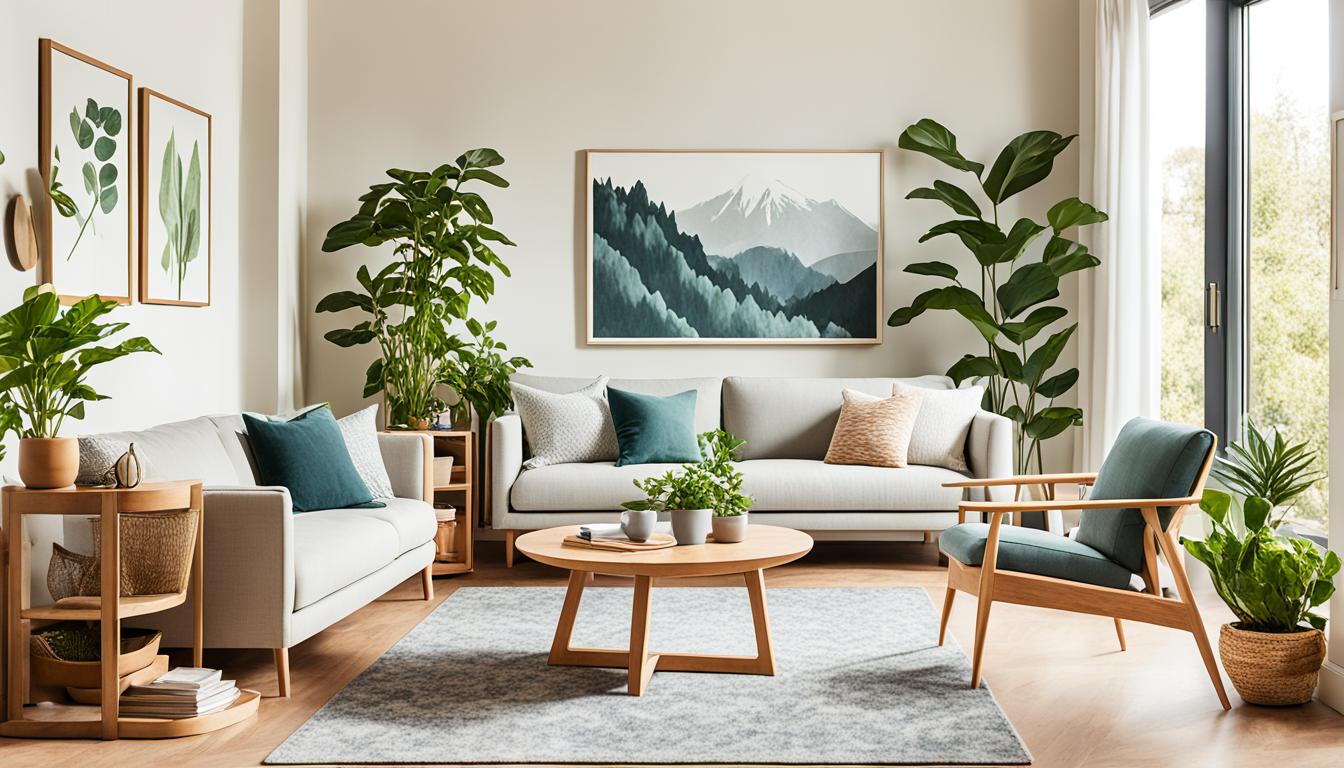Sustainability in interior design makes spaces not only beautiful but also eco-friendly. It aims to lower the harm on our planet. This approach uses space carefully and pick construction materials that don’t harm the environment.
It’s important because the building industry uses a lot of nature’s resources. So, designing spaces with sustainability in mind is key to protect our planet. Sustainable designs look at how our choices affect people, the budget, and our planet over time.
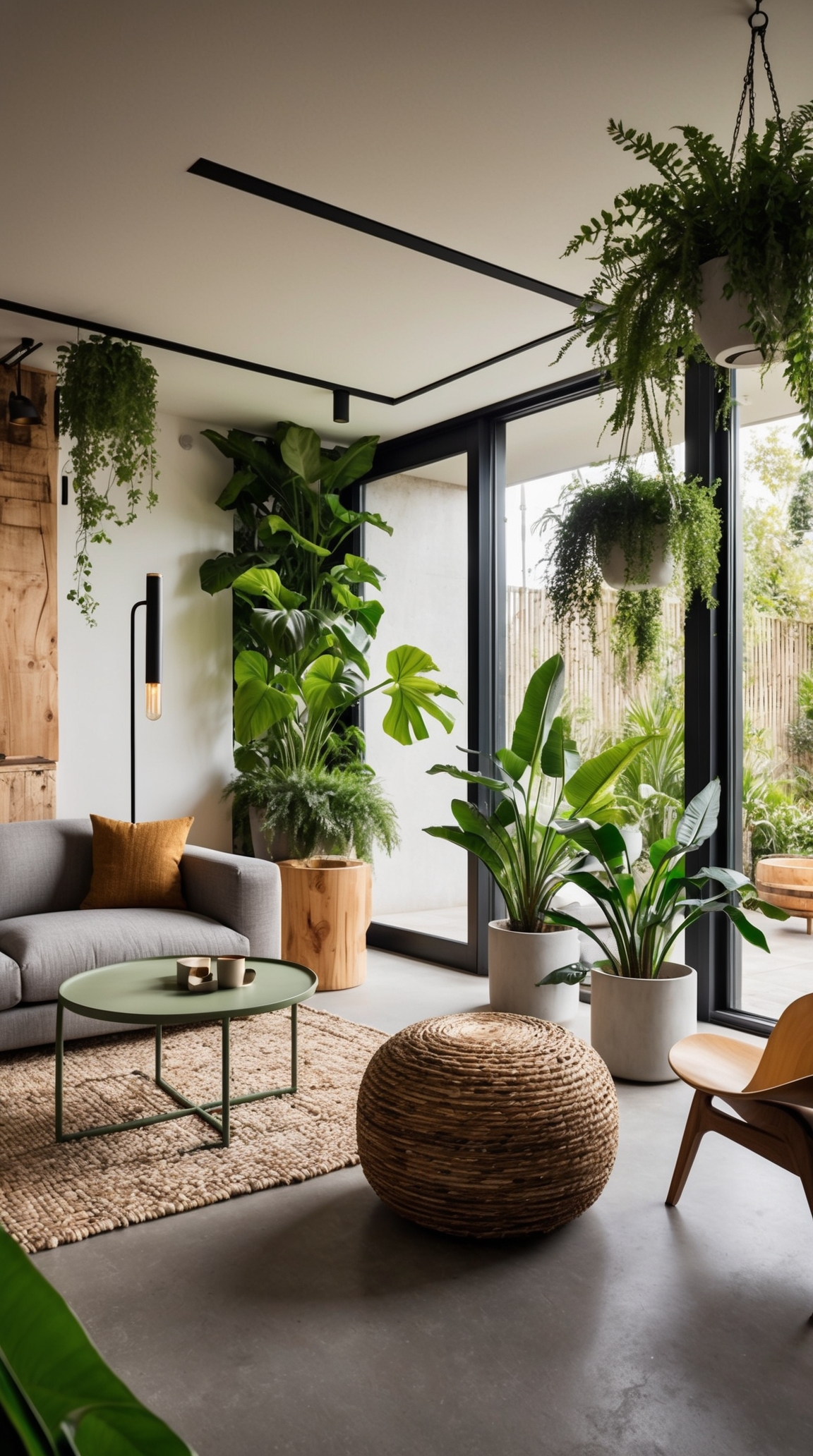
A big part of sustainable design is cutting down on needing lots of heating and lighting. This is done to save energy. Picking energy-saving light bulbs is part of this. They help cut energy use. Choosing natural materials like responsibly sourced wood also makes a difference.
Another way is to use old or reclaimed materials in new designs. This cuts down on waste. Also, buying furniture that lasts a long time means less gets thrown away. Thinking about clean air and light in your designs helps create healthier spaces.
Using LED lights means you change bulbs less often and use less energy. Adding vintage furniture brings a unique style and reuses old items. Energy-efficient appliances are also important. They help lower the energy used in homes.
Bamboo is a great option for sustainable design. It grows fast, makes lots of oxygen, and removes carbon dioxide. The Circular Economy is a model that looks to reduce waste and pollution in design. It pushes for using renewable sources and valuing what’s already out there.
A Life Cycle Assessment (LCA) looks at the impact of materials from start to end. It helps us pick the most eco-friendly options. More and more people are choosing green options. They’re ready to spend more on products and services that are good for the planet.
Understanding Sustainable Interior Design
Sustainable interior design is about finding the right mix of beauty, practicality, and care for the planet. It looks at how spaces can be both good for us and the environment. This approach deals with making places that are good for people, nature, and our wallets, not just about being “green” for show. It works to use things that don’t harm our world, save energy, cut down on trash, make the air we breathe better indoors, and meet the needs of those who use the space.
Green design covers specific environmental issues. It finds ways to cut down harms quickly. On the other hand, sustainable design is more about the big picture. It aims to create spaces that are good for us and the Earth, making sure we use resources wisely. These sustainable spaces help people feel better, focus more, stay happy, and have less stress. And they make places more valuable in the market, catching the eyes of those looking to buy or rent.
Sustainable design has some key features. It uses materials that don’t hurt the environment, saves energy, cuts down on waste, and makes the air inside cleaner. It focuses on what people need and uses space wisely. To make this happen, it’s important to choose the right materials, save energy, and get help from experts who know how to make things greener and better for us. It’s a team effort with designers, builders, and those who work on protecting the environment.
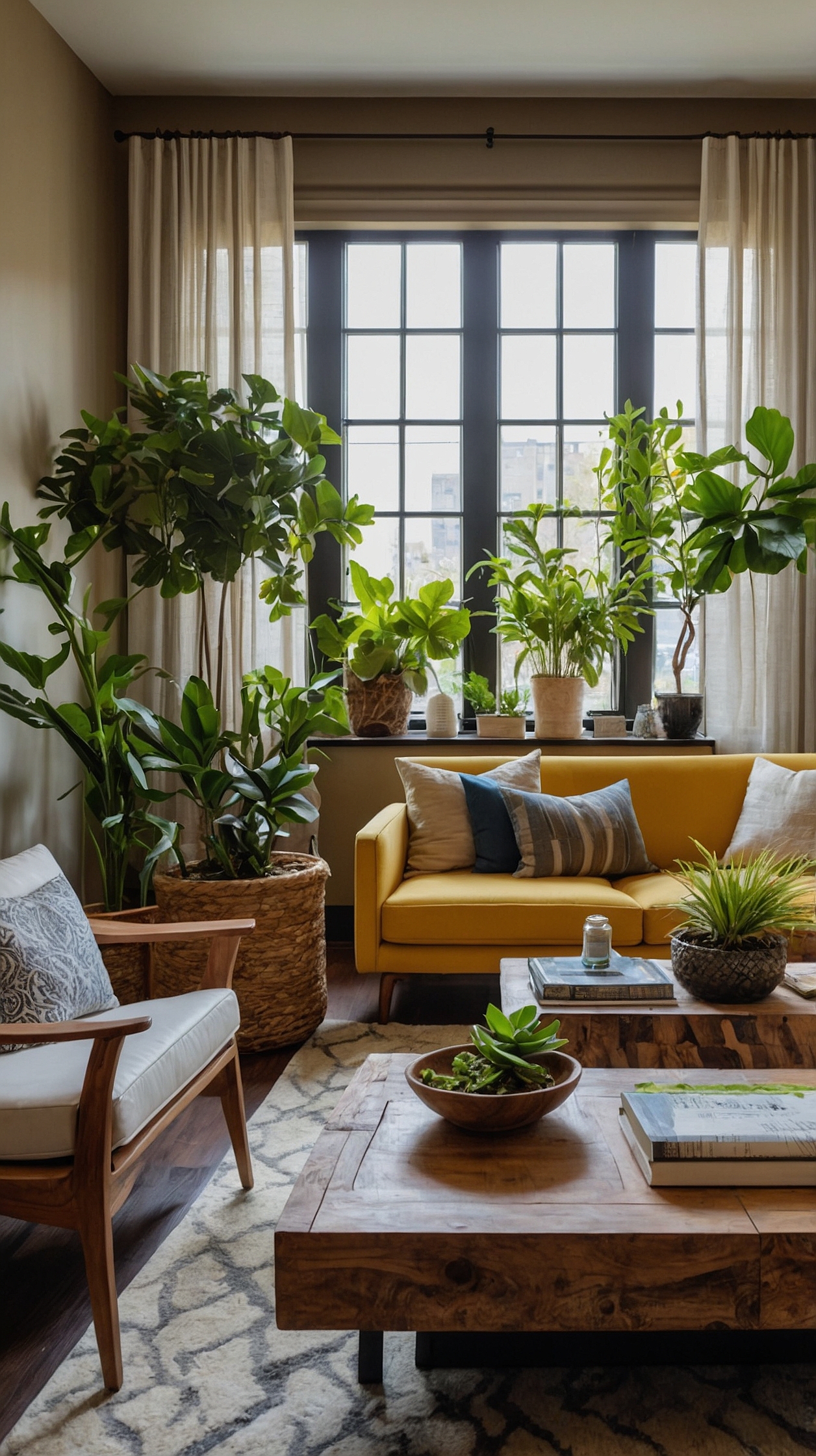
Benefits of Sustainable Interior Design
Investing in sustainable interior design has many advantages. It helps the environment and those living in the space. Sustainable design reduces environmental harm. This means less energy is used, indoor air is cleaner, and buildings last longer. For people, these spaces are comfortable and promote well-being.
They use natural light and pleasant colors. Materials in these spaces help with focus, reduce stress, and increase creativity.
Such design principles also increase a property’s value. Eco-friendly spaces are more wanted in the real estate market. Businesses that focus on sustainability do better financially and make a positive impact on the world. People are willing to spend more on green products.
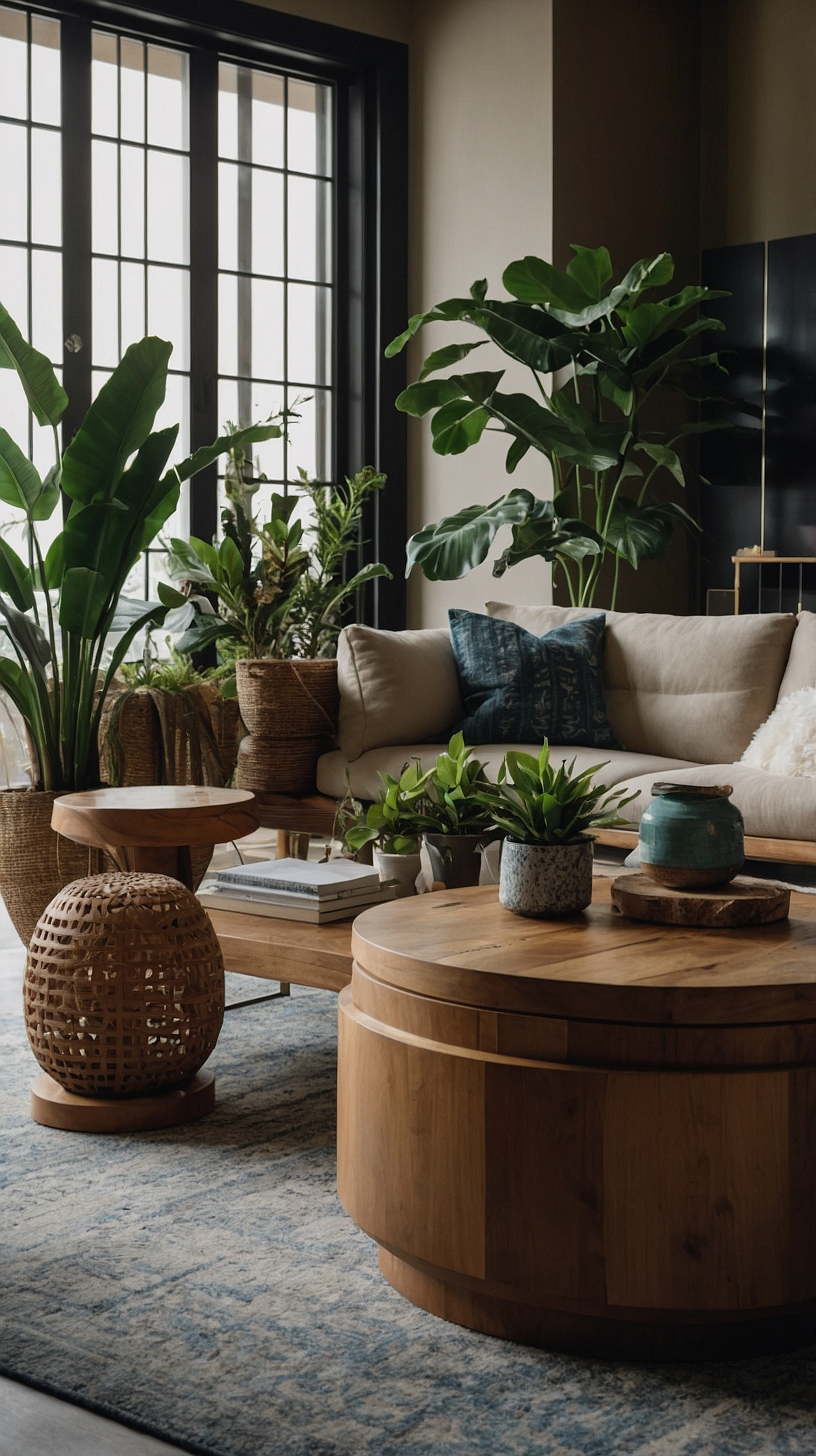
By using low-impact materials and energy-efficient systems, designers create spaces that are beautiful and good for the planet. These spaces make people healthier and happier.
Green Design vs. Sustainable Design
“Green design” and “sustainable design” are used differently but are not the same. Green design cares more about how design choices affect now, using things like eco-friendly materials. On the flip side, sustainable design checks a wider view. It looks at the effects of design on people, money, performance, and the planet for a longer time. It studies the whole life of materials and products. This includes where they come from, how made, shipped, and then disposed or reused. The target of sustainable design is to make places that make people happy while keeping harm to the Earth low.
Sustainable design wants to have zero harm on our planet by clever and caring design. It aims to create a great, healthy space for those who use the building. Some sustainable design rules include picking eco-friendly stuff, making the most of the building’s site, making indoor air high quality, saving water, using more clean energy, and making operations and maintenance better.
Green design tackles specific eco problems using eco-friendly methods and stuff, compared to sustainable design, which looks at the big picture, thinking about the environment, society, and economy. Thinking green when designing a home means picking natural materials, focusing on saving energy, and choosing eco-friendly furniture.
Implementing Sustainability in Interior Design Projects
Implementing sustainability in interior design takes many angles. Designers must keep up with green design trends, methods, and materials. Collaborating with experts like architects and sustainability consultants is key.
Working with clients to set clear green goals is crucial. This might mean picking eco-friendly items that also look good. Or, adding energy-saving elements for a better living or working space. By including specialists and taking a broad view, green ideas can be smoothly woven into the project.
Choosing materials wisely is crucial. Pyramid guides can help make eco-friendly choices. Partnering with suppliers that have green certifications shows you value the planet. Tools like Giki can encourage your team and clients to support sustainability.
Green design looks at using resources wisely and supporting local goods. It also aims to boost the health and happiness of those who use the space. Staying open to new ideas and being flexible is important in this field.
Using life cycle assessment (LCA) and buying from sellers of used items are smart moves. They help reduce waste and limit environmental harm. The Mydoma Environmental Impact Calculator is also handy for watching your carbon footprint.
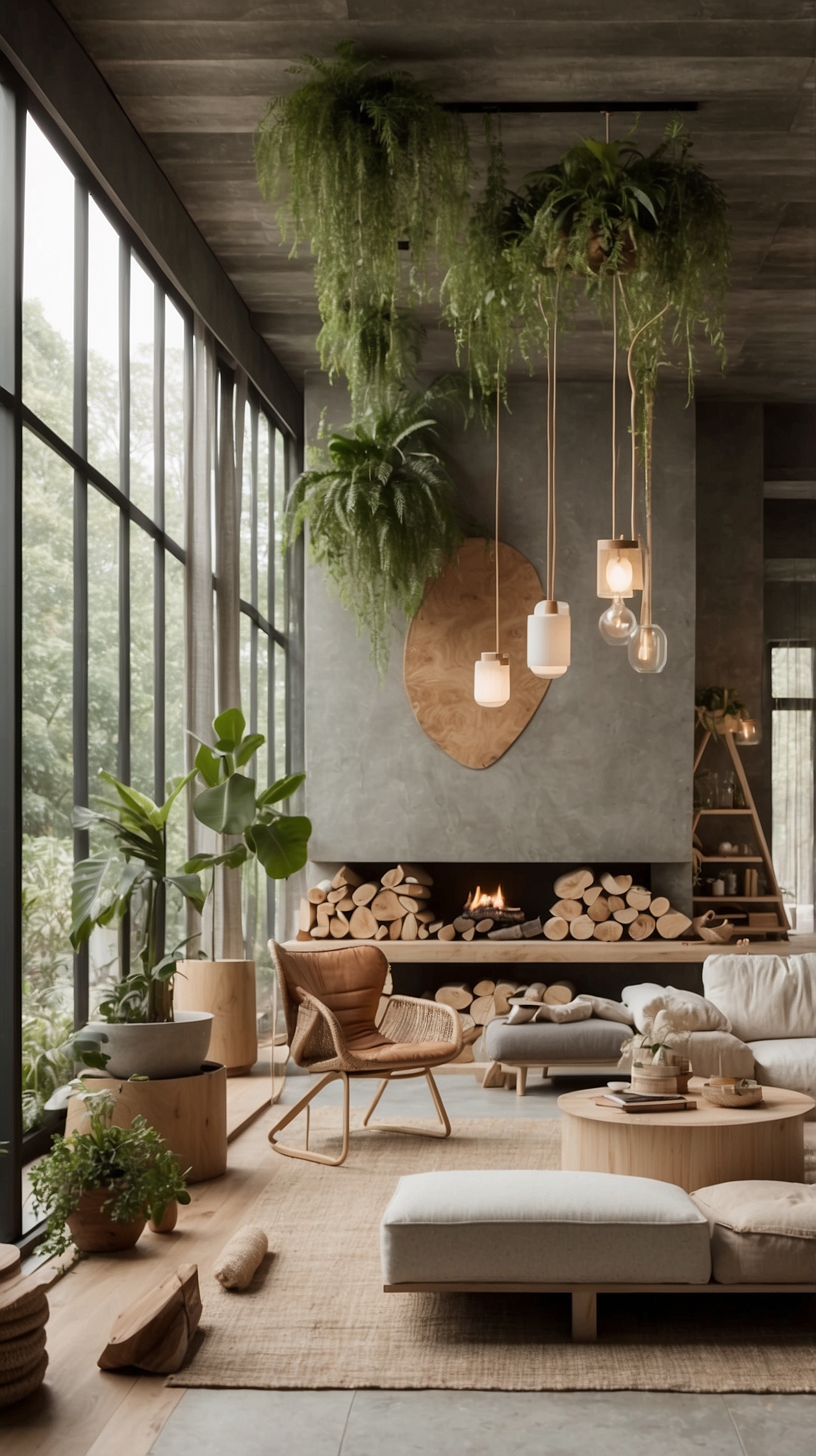
Creating an Eco-Friendly Home
An eco-friendly home is one that uses materials and practices to help the Earth. It’s built to have less bad effects on the environment. This means using materials that don’t harm the Earth and making the house use less energy. When you do this, you lower your impact on the environment, save money, and live more comfortably.
Choose materials like bamboo, cork, and reclaimed wood for your house. They are good for the planet and last a long time. Add things made from organic cotton, linen, or bamboo inside for a cozy, green touch. For floors, think about using bamboo and cork instead of regular wood. They look nice and help the Earth.
To use less energy, let in a lot of natural light and pick good insulation. Buy appliances that save energy. Save water by using things like low-flow showerheads and toilets. Doing this cuts your energy and water bills.
Bring nature inside with plants. They clean the air and make your home healthier. Natural light also makes you feel better and work smarter.
Brought together, these steps make your home kinder to the Earth. They also make you feel better and live better. It’s a win for you and a win for the planet.
How to Incorporate Sustainability into Your Interior Design
Adding sustainability to your designs is key. Start by choosing energy-smart options for lighting, appliances, and heating. Add features like good windows and the right use of sun to cut down on power. Next, go for earth-friendly and recycled materials for your items, checking how good they are for the planet. You can use the Construction Material Pyramid to pick wisely based on green choices.
Then, go for furniture that can change over time or is simple in style to keep it longer. This helps lower trash. Also, bring the outside in by using plants or other natural things to get better air and feel close to nature. And always check the full environmental effect of products before buying, using tools like the Life Cycle Assessment, so you know what you’re getting into. Look for certifications like Cradle to Cradle for quality marks.
By putting these green steps in your work, you can make spaces that are not just pretty but good for the earth. Keep an eye on using light and fresh air to use less power. Remember that your design choices can help people nearby or far away and make sure they’re fair for everyone.
Keep learning and changing in how you design for the planet. For unique pieces, look at second-hand items, which are often kinder to the planet. Tools like Mydoma can help watch and limit how much pollution your designs make.
Choosing Low-Impact Materials
Choosing materials with low impact is big in sustainable design. They come from renewable sources or are made from recycled stuff. These materials are easy on the environment because they have low VOCs, are energy-efficient to make, durable, and simple to keep. Things like wood from eco-friendly forests, bamboo, recycled glass, and cork fit the bill. Designers must look into how materials are sourced, made, and what happens to them after use. This way, they can be sure their work is eco-friendly.
Bamboo is really good for the planet because it grows quickly and needs little energy to produce, unlike regular wood. Rattan is another sustainable choice, much like bamboo, and is made in ways that use less energy and produce less waste. Terrazzo is cool because it uses leftover marble and glass, cutting down on waste. Finishes like Lime Wash and Tadelakt are also great; they’re free of harmful chemicals. Reclaimed wood is not just eco-friendly but also brings a cozy vibe. Glass is super recyclable and comes in many forms, like frosted and etched. Lastly, natural stone is another winner for sustainability – it’s long-lasting, recyclable, and easy to care for.
Valuing Energy Efficiency
Maximizing energy efficiency is key to sustainable interior design. It involves using natural daylight and using better insulation. Plus, it means using sources like solar or wind energy. Designers must pick appliances and systems that use less energy. This helps reduce the building’s use of non-renewable energy and its environmental impact.
Investing in Modular and Minimalist Furniture
Choosing modular and minimalist furniture is key in friendly interior design. Modular furniture is made of different parts that you can change to suit your needs. This kind of furniture cuts down on waste and lasts longer. It also adapts well, making your space versatile over time. Minimalist design focuses on simplicity, quality, and smart use of space. This mindset is also good for the planet. By going for these designs, interior designers make rooms that need fewer changes. It fits the circular economy’s plan. This is not only good for the Earth but it also adds value and flexibility for the people using the space in the long run.
By 2030, the world’s furniture market is estimated to be worth $780.43 billion. Sustainable furniture, like modular and minimalist designs, is becoming more popular. Items that you can change or recycle easily are a hit. They follow the circular economy idea. Designs that are minimal and sleek help the planet too. They use clean lines and highlight quality. This approach makes your space adaptable and good for the environment. It also adds lasting value and flexibility for your clients.
Incorporating Biophilic Design
Biophilic design is about blending nature into the spaces we create. It uses natural shapes, patterns, and relationships to connect us with the outside world. Designers add things like living walls, indoor plants, and water features to bring nature indoors. This creates a stronger bond with the natural world for those using the space.
It’s not just about making things look good. Biophilic design also boosts our health, focus, and happiness. By including natural elements, design can reduce stress and improve how we interact with our environment. This approach benefits both the planet and our well-being.
Features like fire and water sounds make our indoor space more relaxing. Using soft colors and organic shapes helps create a peaceful atmosphere. Mixing different textures adds depth and makes a space feel inviting.
These design choices don’t just make a room look nicer. They can also make us physically feel better. By bringing in elements like plants, we clean the air and boost our mood. Choosing materials such as wood and wool not only looks good but is also good for the environment.
Plenty of light at home keeps us in a good mood and sleep pattern. Not having everything perfectly match in our decor shows we’re unique. It makes a place more interesting for visitors. Decorating with aging materials, like leather, tells a story and adds a unique touch to our space.
Adding green, whether it’s through plants or paint, makes a room feel peaceful. It brings in a bit of nature that helps us relax and feel at home.
Considering Life Cycle Assessment
Before you pick materials or products for interior design projects, do a life cycle assessment (LCA). This helps you understand their full environmental impact. An LCA looks at how products are made, used, and disposed of – showing you the big picture of their sustainability. With this knowledge, you can choose the most eco-friendly options, even if they don’t look “green” at first.
Looking at an item’s entire life, from start to finish, lets you reduce your project’s impact. By making informed choices, you lower the project’s carbon footprint.
Using LCA is key for real sustainability in buildings. The aim is to cut down on the material’s carbon footprint and costs over its lifespan. This leads to smarter, more sustainable building decisions. LCAs have different scopes, like Cradle to Cradle or Cradle to Grave. They show the material’s environmental impact at every stage.
LCA is a powerful tool for making eco-conscious decisions in design projects. It encourages using sustainable materials, which lessens the project’s environmental mark. Recommending LCA means we understand the need to look at a material’s environmental effect from start to finish. It highlights the importance of sustainability in design.
Embracing the Circular Economy
Sustainable interior design follows the circular economy’s key ideas. This approach aims to cut waste, use products again, and recycle. Instead of a straight line that produces waste, the circular economy focuses on a loop. Here, materials are reused over and over to make new items.
For an interior designer, going circular means choosing quality, eco-friendly materials. These materials should be easy to take apart and reuse later. It also involves using old furniture and decorations in new ways. This helps avoid the need for always buying new things.
This step helps designers lower their work’s environmental harm. It also supports creating a more eco-friendly world for us all.
Conclusion
Adding sustainable interior design best practices to your work is very important. It’s more than a trend. It’s a key job for those who want to help the planet and people living in buildings. These practices include using materials that are kind to the Earth, creating systems that save energy, adding natural elements to designs, and following circular economy methods.
This approach helps you make spaces that are not only nice and useful but also good for the environment and our health.
Interior designers are really important for the planet’s future. By keeping up with the newest sustainable design ideas and working with experts, you can help change how we use and enjoy our places.
Choosing to be environmentally responsible is critical for designers. It’s a must for those who want a world that’s better for everyone down the line. If you use sustainable methods in your work, you can truly help both the Earth and the people who live in the spaces you create.

